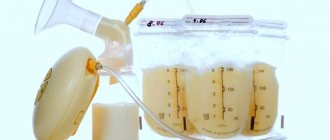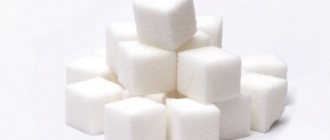Breast milk is an essential condition for the proper physical and mental development of the baby. It not only saturates the body with necessary substances, but also helps to develop a strong immune system. The fatty acids it contains ensure healthy brain growth and strengthen the baby's nervous system.
Every mother knows and understands that the best nutrition for a baby is her milk, and strives to prolong breastfeeding as long as possible. But over time, fatigue accumulates, and if previously the mother happily fed both day and night, then gradually she begins to think about how to wean the child from breastfeeding at night.
Nevertheless, it is worth thinking: is it worth the rush? After all, the best stimulation of lactation occurs at night, in the early morning hours, when the hormone prolactin is produced most actively.
If you stop breastfeeding at night, this step can lead to the cessation of lactation.
Also, do not forget that a mother for a baby is the most dear and beloved person in the world. And lying at the mother’s breast under the wing is the most pleasant activity for the baby.
When to wean off night feeding
Some mothers try to stop breastfeeding at night as early as 6 months. Experts categorically do not recommend doing this; many recommend not giving up night feeding for as long as possible.
A baby at the age of six months will not be able to withstand a long period of time without milk. For him, regular food intake is a vital condition. Very young babies can ask for breastfeeding every 1.5-2 hours. Many babies nurse all night long. Thus, the child not only gets satiated, but also calms down and feels completely safe. In this case, the mother gets enough sleep and the baby sleeps peacefully throughout the night.
You can stop night feedings no earlier than one year. At this age, the baby almost completely switches to other types of food and will be able to tolerate weaning more easily. It is easier to wean a bottle-fed baby because the formula is more nourishing and takes longer to digest. It will be easier for the baby to hold out until the morning.
With the question of how to eliminate night feedings, it is best to wait until the age of two years. For a one-year-old baby, not eating at night can sometimes be very stressful.
What to consider when canceling:
- The baby is one year old. Before this age, it is not advisable to try to stop feeding your baby at night.
- He is gaining weight well. If there is a shortage, you should also not stop feeding the baby at night.
- The baby is completely healthy, no preventive vaccinations are expected, and he is not teething.
- Consumes sufficient amounts of complementary foods throughout the day.
- The daily volume of formula consumed has decreased significantly or there are few breastfeedings left.
How to replace breast milk during weaning
Weaning is a stressful situation for a child, so before making a decision, it is important to take into account risk factors, eliminate complications and make this process soft and painless for both.
What is not a reason for excommunication?
You should not make a decision about weaning if the child refuses milk - more often this is due to physiological fluctuations in the child’s body, for example, low hemoglobin, gastrointestinal disturbances. It is breast milk that will become the primary medicine in these cases, and weaning will cause complications.
Eating complementary foods and the ability to eat from a plate is not a reason to stop breastfeeding. The composition of milk is not comparable in nutritional value to artificial mixtures and cereals. Properties last up to 2-3 years. Therefore, WHO recommends continuing natural nutrition until the baby is weaned from breastfeeding [2].
- Lack of appetite.
- Frequent waking up at night.
- Going to work.
- Nursery (up to one and a half years old).
Sometimes a mother thinks about stopping natural feeding because of the desire to get enough sleep. Restless sleep is more common in children fed on demand. The opinion that a bottle-fed baby will wake up less often is incorrect. The child will continue to require reassurance, mother’s warmth, and rocking, since the cause of anxiety lies in the peculiarities of the infant’s sleep cycle.
A baby over a year old reacts more calmly to the introduction of regular food, since the digestive system is already adjusted to the new regime.
But even a working mother will help her baby adapt better if she continues breastfeeding in the evening and at night.
Milk will enrich the diet, support the immune system, and contact during evening feedings will soothe the child who misses his mother. During business trips, it is recommended to express and not suppress lactation.
The need to attend kindergarten for a child under one and a half years old often serves as a reason for weaning from natural feeding. But even in this situation, stopping GW is not justified.
After a year, the baby is recommended to learn to fall asleep without his mother; the skill will stabilize after 2-3 weeks. Dense feeding remains in the morning and before bedtime. Attachment will provide the child with a reliable support in the stressful situation of adaptation to kindergarten.
Mom should think carefully about the need to wean from breastfeeding. After all, 3 breastfeedings (700-750 ml) cover ½ of the baby’s daily need for energy and protein, 50% for vitamin A, and 100% for ascorbic acid and tocopherol. Breastfeeding in combination with complementary foods is the key to full development and health.
Bad time to wean: pediatrician's opinion
If the question arises about stopping breastfeeding, it is necessary to determine periods when this should not be done. When weaning from breastfeeding, the child experiences stress, so to avoid the risks of worsening the situation, it is worth excluding additional disturbing factors.
- Stress: moving, mom going to work, hiring a nanny, going to nursery.
- Illness and recovery period.
- Before and after vaccinations.
- Summer months.
Pediatrician E. O. Komarovsky claims that weaning during stressful periods will worsen the child’s nervousness and fear. There is a feeling of uselessness, which provokes moodiness and anxious sleep. The age of risk is also noted - 1 and 3 years, the period of illness. Weaning a child from breastfeeding is recommended 2-3 months after a stressful situation.
Vaccination is also considered a stressful moment for the baby’s psyche and physiology. After vaccination, immunity is reduced, leaving a feeling of resentment and fear. Only breast milk can replenish protective resources; stress goes away after sucking the breast and hugging the mother.
Pediatricians say that summer is a bad time to wean your baby from breastfeeding, as the risk of contracting intestinal infections increases by 40% in the warm months. After breastfeeding stops, due to reduced immunity, the child’s body is extremely vulnerable to pathogens. Mother's milk acts as a protective barrier against infection.
The second factor against weaning from breastfeeding in the summer is the risk of dehydration. In the heat, fluid loss is replenished only by drinking. But the baby does not immediately learn to drink the daily amount of water, which disappeared from the diet with milk. The skill takes time, but if the temperature on the thermometer goes off scale, it is unacceptable to hesitate.
The best period for refusal is autumn and winter, but age plays a major role. If the baby is less than a year old, then stress for both is an integral part of the weaning period.
When is it time to wean your baby off breastfeeding: the best time
The main factor indicating readiness to stop hepatitis B is the absence or a critical minimum of gland filling. The observed time period is 12 hours. Logically, to check milk production, you need to stop feeding. For mothers whose children attend nurseries, there will be no problems. During pumping or by the feeling of breast fullness, a decrease in volume is easy to determine.
A characteristic sign is if, in the absence of night feedings, there is no milk in the morning. It is important not to confuse the phenomenon with blockage of the ducts. A symptom of lactostasis is soreness, compaction in the glands.
The period for determining the need to wean from the mother is 2 months. If milk decreases with the same diet and regimen, it’s time to stop lactation.
Determining whether the baby is ready is more difficult. It is recommended to continue feeding until prolactin is produced. Normally, this period lasts 1.5-2 years without failures.
Ways to wean a child from breast milk at 1 and 2 years of age
Depending on the cause, there are 3 ways to stop breastfeeding - mild, emergency, and medication. And if the mother is unequivocal, WHO recommends strictly following the instructions for proper (gentle) weaning from breastfeeding.
Now the baby only receives breastfeeding on a scheduled basis. The diet includes porridge and purees with different flavors (to choose from, to determine preferences).
- Eliminate intermediate feedings - to calm the baby when the mother thinks he is hungry (the situation is typical for feeding on demand). It is better to try to calm the child down with hugs, rocking, or singing a song. If you are sure that anxiety is due to hunger, introduce complementary foods.
- Stop feeding after a nap - immediately distract the child with a favorite toy or a new game. It is recommended to remove 1 feeding per week. If the baby has a hard time refusing, the second feeding is excluded after 2 weeks. For 3 weeks, a morning-evening regime is established.
- Eliminate daytime feeding - after breakfast, replace sleep with a walk (2-3 hours). After returning, feed the baby soup, drink tea with cookies and put him to bed with a fairy tale. Afternoon snack without feeding (point 2).
- Stop breastfeeding in the morning - after a week, 1 breakfast every 7 days is replaced with complementary foods, exclude 1 feeding per week. The actions are similar to step 2.
- Remove feeding before bedtime - 2 weeks before refusal, add a new bedtime ritual. For example: a bath with chamomile - a glass of milk - a fairy tale. At first, breastfeeding is allowed at night (along with the ritual); after 5-7 days, sucking is removed. In the first 4-6 weeks, it is better for the father to put the baby to bed.
It is important to replenish the water deficit that occurs with each feeding. A baby needs 50 ml/kg body weight per day. The norm is calculated taking into account that 90% of the daily fluid requirement is met with milk.
For example, a 1-year-old child weighing 10 kg requires 500 ml of water - this is 3 full feedings. When there is a shortage of normal nutrition with natural nutrition (for example, there are 2 feedings per day), the baby drinks from a spoon or bottle.
Methods when you need to quickly wean a child from the breast are used only in extreme cases. Including diagnoses: HIV infection, tumor, open form of tuberculosis, purulent mastitis and chemotherapy. The methods are traumatic for mother and child.
- Mom's departure - 3-5 days, transition to formula. A double stressful situation for the baby: interruption of tactile communication and unsatisfied sucking reflex.
- Breast constriction – risk of mastitis 44%. Psychologically difficult for the child, dangerous for the mother.
- Hormonal drugs are a modern method of suppressing the production of prolactin. Valid for 12 hours. Severe adverse reactions are observed due to sudden changes in hormonal levels.
When using medications that are incompatible with feeding, breastfeeding is recommended to be suspended, but not stopped. At this time, the milk is expressed. After completing the course, it is better to continue natural feeding, especially if the child is less than one and a half years old.
The best way to abruptly wean a baby with minimal risks is hormonal drugs. The effect of one tablet. It acts irreversibly if you do not provoke the production of prolactin (application).
The drugs have side effects in 65-70% of cases taken. Manifestations: nausea, vomiting, dizziness, tachycardia, decreased blood pressure. Symptoms are observed for 2-5 days, then disappear.
To wean from breastfeeding without harm to the baby, you need to follow the instructions of the gentle method step by step. The main advantage is that the child’s immunity, nervous and hormonal systems painlessly adapt to a new diet. The mother is calm, the child is happy.
The World Health Organization states that breast milk is the only way to increase a baby's resistance to infections and viruses. That is why weaning children under one year old is allowed in extreme cases. The stress that the baby will experience is tantamount to parting with his mother.
If the situation requires weaning your child off breastfeeding early, it is recommended to do this before 10 months or 8-12 weeks after the first birthday. Pediatricians consider the age of one to be a critical moment in a child’s mental and physical maturity. Weaning at 11-13 months threatens the baby with allergies, gastrointestinal disorders, and decreased immunity. The result is colds and infections.
Breasts during weaning
If a gentle method is used, milk continues to be produced for 4-8 weeks. With an abrupt cessation of breastfeeding (without pills), congestive glandular diseases are diagnosed in 20% of cases.
Lumps form in the chest and an abscess develops. More often, complications appear on the 3rd day after complete cessation of breastfeeding and are accompanied by severe pain and inflammation.
To eliminate breast problems, special care is recommended.
- If the weaning was abrupt, it is better to express according to the principle of the soft method - gradual withdrawal of breastfeeding.
- Carry out the procedure 4-5 times a day until the breasts are soft, reduce the number of pumpings every 5 days.
- When expressing, leave a little milk - this way it will burn out faster.
- Wear underwear without wires made of cotton fabric.
- Drink herbal infusions and teas - mint, lingonberry, sage, parsley.
- To relieve inflammation, use cool compresses (hot compresses are unacceptable).
- For pain relief, chilled cabbage leaves (brushed first) are recommended.
- In case of severe pain, or at a temperature of 38.0 °C or more, you can take paracetamol.
- It is allowed to take sedatives at night (Valocordin, Motherwort).
- If inflammation and pain increase, you need to contact a mammologist.
Unpleasant sensations normally go away after 2 weeks. The mild method of weaning is less often accompanied by inflammation of the glands. In both cases, the tactics are the same - relieving symptoms, inhibiting prolactin.
Seals are the first sign of lactostasis. The initial stage of blockage is treated with massage, cool compresses, and regular pumping. If the process is started, the temperature rises - there is a high risk of mastitis, purulent abscess.
How long does it take for milk to burn out after weaning?
As pumping decreases, the milk gradually burns out. It is believed that a breast pump prolongs the production of prolactin, since the device acts similarly to the sucking reflex.
In theory, breast discharge stops 7-14 days after stopping breastfeeding. But practical observations note individual duration. It is normal if milk comes out when pressed after another few months, even 1-2 years.
If the mother is not bothered by pain in the chest, there is no reason to worry. The hormonal background is individual in each case, and it takes different times to rebuild the body.
According to the recommendations of pediatricians, it is better to continue breastfeeding until 1.5-2 years. At the same time, work, nursery or departure is not a reason to deprive the baby of unique nutrition. Abrupt weaning provokes disturbances in the physiological and mental processes of the child, and therefore is allowed only in extreme cases. The safety of the baby is the main rule when choosing a method for stopping breastfeeding.
Dessert for today - a video about what not to do when weaning. Is it possible to tighten your breasts? Do tablets to suppress lactation help? Should you eat or drink less to reduce milk supply? During what periods is it better not to wean a child?
Source: https://rody-beremennost.ru/voprosy/chem-zamenyat-grudnoe-moloko-pri-otluchenii-ot-grudi
Children are artificial
It is somewhat easier for the mother of a bottle-fed baby. She knows approximately at what time the baby will require the next portion of the formula. But even here, not everything is so simple. Over many months, jumping up several times a night is no less tiring than breastfeeding around the clock. Moreover, some children ask to eat every 3-4 hours.
Therefore, you can try to increase breaks in accordance with the table:
| age, months | night break |
| from 1 to 4 | 6 – 6.5 hours |
| from 4 to 6 | 6.5 – 8 hours |
| from 6 to 9 | 8 ocloc'k |
| over 9 | 8 – 9 hours |
There is no need to rush to make the mixture as soon as the baby wakes up. You can try to put him to sleep again. If you succeed, over time the breaks will become longer, and gradually you will be able to completely abandon the bottle.
In addition, it is advisable to try to feed the mixture just before bedtime.
It also happens. When the baby grows up, he himself will begin to eat less often at night. In this case, it may seem to the mother that the baby has not asked for a bottle for a long time and is too hungry. As a result, she wakes him up to eat. Under no circumstances should you do this. This can only disturb the child’s sleep.
If it is difficult for a mother to quit night feedings on her own, you can ask advice from more experienced mothers who have already weaned their children from the breast on how to eliminate night snacking.
Many babies do not wean immediately, but if desired, any mother will definitely be able to understand the needs of the baby. Things don’t always work out quickly; it often takes a lot of time before the baby forgets about night feeding.
Gradual weaning
It is advisable to wean the child slowly. Replace part of the mixture with water every day. The feeding schedule will remain the same, but gradually the baby will refuse to eat at night. This method is suitable for bottle-fed children. The idea is that gradually the mother gives an increasingly diluted mixture. Over time, only water will remain, and the child will either refuse to drink at night or will drink water.
A mother who is tired from getting up at night may decide to leave the bottle with the formula in the crib; this is strictly not recommended. The mixture left in a warm bed will quickly deteriorate, which threatens to poison the baby. With water there is no such risk. However, it is not advisable to leave water near the baby; if he drinks unattended, he may choke. Therefore, the best solution would be not to teach your child to sleep with a bottle at all.
For breastfeeding babies, you can replace breast milk with something else. What should I give my baby at night instead of breast milk? The same water will do just fine. Children who are already receiving a decent amount of complementary feeding usually drink enough water and are already familiar with it.
Abrupt weaning
It is quite possible to wean off night feedings in one day, but most likely it will be more difficult to do. With this method, the baby will not be ready for such a turn of events. This will be very stressful for him. The baby is accustomed to night snacks, and now he will feel hungry, and this is unlikely to contribute to healthy sleep.
Of course, for the mother this method may seem attractive due to the speed, but in reality the baby may throw a hungry tantrum. And mom will still have to feed him. But no one is stopping you from trying. Some kids tolerate such changes quite calmly.
How to replace breast milk at night? Compote made from prunes, raisins or dried apricots is good for a one-year-old child. Children usually enjoy drinking such drinks. And mothers eliminate late-night snacks without the whims of the baby. How much compote to give depends on the baby. One will drink more, the other less.
Help from relatives
When a mother thinks about how to wean her child from night feeding, she can really use the help of her husband or grandmother. It will be very difficult for a child who is used to falling asleep with the breast to quickly adjust. Let someone else take on the responsibility of putting the child to bed for a while. Without seeing his mother, it will be easier for the baby to calm down, and he will fall asleep sooner. Then, having lost the habit of snacking at night, the baby will be content with a bedtime story instead of his mother's breast.
Some tips for moms for speedy success:
- If before this mother and baby slept together, then from now on it is necessary to move the child to his own crib. Without seeing the mother or smelling her, it will be easier for the baby to get used to the lack of night feedings.
- It is advisable to spend as much time as possible with your baby during the day. An under-caressed child will require much more mother's attention at night. If the mother does not have such an opportunity, or she is forced to go to work, it is worth delaying weaning.
- It is necessary to involve dad in activities with the child more often. Communication with both parents is equally important for the baby. Dads often don't pay enough attention to their children. Let your baby never feel lonely.
- Eating a nutritious meal during the day will help you sleep well. There is no need to overfeed at the penultimate meal, and before bedtime you can feed more heavily.
- And, of course, you shouldn’t listen to harmful advice like putting mustard on your nipples and offering it to your child. This can only ensure that the baby is severely injured. After all, his trust in his mother is limitless.
- Children under one year of age experience teething especially hard. Sucking at the breast has a calming effect on babies. It is necessary to postpone stopping feeding until the problem goes away.
- You can try to reduce daytime naps. If the baby gets tired during the day, he is guaranteed a sound sleep. But you can’t completely deprive your baby of rest, otherwise it will be more difficult for him to fall asleep.
- A half-hour bath before bed will also set your child up for a restful night. And when you leave, the child will quickly calm down and fall asleep.
- You cannot wrap your child up at night. Light pajamas and a small blanket are enough. Sleep in a cool room is more sound. It is advisable to maintain an optimal humidity level. A humidifier works well.
- You cannot refuse if the baby is unwell. Sudden stress will only worsen his condition. No matter how much time it takes to prepare, you cannot rush in such an important matter.
How to wean a baby: 3 effective ways and important rules from a pediatrician
Article last updated: 04/01/2018
Let's figure out how to wean a child from breastfeeding and at what age this should be done. We will also learn the advice of experienced mothers on how to wean a child from breastfeeding.
When to wean?
The process of breastfeeding can drag on for years.
According to WHO, the recommended age for breastfeeding is 2 years. After all, after a year of life, the child develops immunity, and milk contributes to its better development.
Christina, 25 years old: “I think that the optimal age for stopping breastfeeding is somewhere around 1.5 years. My daughter had already started kindergarten at this age, so I decided. We managed it quite easily."
Of course, the ideal time to stop breastfeeding is when the baby refuses his treat on his own, but few mothers wait until this time.
Statistics say that in recent years only 50% of women are breastfeeding, and the majority feed for up to 1 year. Only a few retain this invaluable product in the second year.
- The child has doubled his weight since birth.
- Receives all types of complementary foods.
- A baby can survive without breast milk for 12 hours or more.
- The child does not suck pacifiers, fingers, or bottles.
In order to wean a child from breastfeeding, there are three ways:
- separation of mother and child;
- medicinal method;
- planned, gradual, soft.
“Soft” weaning method
One of the safest methods from the point of view of maintaining psychological comfort is systematic weaning.
The baby should not be weaned during the following periods: the child is sick, has a fever, the baby is teething, the vaccination period. It is better to wean a child from the breast in the cool season. It should not be taken away in the summer, in hot weather.
- If you have ruled out these four points, then you can safely prepare for weaning.
You should start by refusing one feeding. It’s better for mom to choose which one. Distract your baby with games and walks in the fresh air. Include dad and grandma in the weaning process. The child should feel your care and love. - Observe your child for three days. As a rule, giving up one feeding is well tolerated by babies.
- After three days, we switch to giving up two feedings.
- And so, gradually, we remove all daytime feedings.
- We’ll talk about avoiding feeding in the evening and at night below.
Do not replace breasts with bottles and nipples. This way you will not get rid of the baby's desire to suck. Use cups and sippy cups.
Take your baby in your arms more often. Don't undress in front of your child.
Natalya, 30 years old: “When I started weaning my baby, I tried to surround her with care. We walked longer, distracted ourselves by playing games.”
Of course, it is more difficult to wean when the child is already over a year old and he understands a lot. On the one hand, it’s difficult to explain that “you can’t have boobs,” but you can come to an agreement with some kids.
Some mothers smear the nipple with green paint. We can say that mom’s breasts are “sore” and should not be touched. Also, some women cover their nipples with a bandage. I would not recommend this method, since tearing it off is painful and traumatic for the delicate skin of the areola. Not everyone succeeds in weaning with these “cruel” methods.
Probably the worst thing for any nursing mother is the problem of how the child will fall asleep without a breast. After all, most children fall asleep while sucking, since this is a very energy-intensive process. How to wean a child from night feedings? Let's look at some tips:
- Create rituals that will help your child fall asleep - a bedtime story, evening kefir, lights off. You can leave a night light that the baby will specifically choose for himself.
- Children often love to fall asleep to their mother's lullaby.
- Give your child a bath before bed. You can use soothing herbs - chamomile, valerian root.
- You can replace the sucking process with rocking in your arms, pressing it to your chest.
- Try to place the baby separately in your own crib. When your baby sleeps with you, he smells the milk and will be even more fussy.
If the child begins to eat poorly and throws strong tantrums, then wait a little before weaning. This means that the baby is not yet mature enough for this.
At night, 2 - 3 hours before bedtime, you can feed your baby porridge or give kefir. You sleep better on a full stomach. Weaning at night is a long process, be patient.
Problems you may encounter
Sometimes, despite all the efforts on the part of the mother and close relatives, the baby does not want to give up night snacks. At the same time, he is capricious, cries and does not want to calm down until he receives a breast or a bottle. Giving up food can take a lot of time; there is no need to rush things.
Sometimes there may be changes in the child's behavior; he may become more lethargic and constantly reach out to his mother. In such cases, experts recommend holding off. Do not injure the child. After some time, you can try again. You can also contact your pediatrician with questions about how to stop night breastfeeding. He will give recommendations on how to wean your baby from the breast and make it as painless as possible for the baby.
How to replace breast milk after a year: feeding at night during weaning
Summary of the article
According to the recommendations of the World Health Organization, breastfeeding should be continued for at least two years. However, most mothers try to curtail lactation by the first year.
This is due to various reasons: the need to go to work, moving the child to his own crib, illness, re-pregnancy or ordinary desire.
If the mother has firmly decided to stop breastfeeding, it is necessary to plan action tactics.
Urgent weaning - at what age does the stage of independence begin?
This publication will discuss how to quickly wean a child from breastfeeding.
Of course, it is wise to wean your baby gradually:
- when he needs her little;
- when the mother, due to the fact that the child hardly attaches to the breast, already has little milk;
- when they are both already mentally prepared for the next stage in the development of their relationship - for greater independence on both sides.
Weaning after one year
Weaning children who are over a year old is a little more difficult to produce than at an earlier age because:
- The baby already understands everything, knows well where mom and boob are, and how to get his favorite milk.
- The older the child, the more strongly his love for breastfeeding is expressed, and the more difficult it is for the mother to take away such pleasure from him.
- It is often difficult for a mother to stop the lactation process, since it is produced regularly for quite a long time.
If you have to wean your baby earlier than planned, it can be quite difficult, first of all, morally for both mother and child.
Having such experience, I want to give some tips that will help the child and you cope with the process easier:
- Do not deprive your baby of mother, breast, and milk at the same time. Do everything gradually. There is no need to move away from home and leave the child with relatives. It will be much easier for the baby when his mother is nearby, he will be able to cuddle up to you and calm down if he is upset.
- Depending on the age, try to explain to the baby that there is no more milk in the milk, or it is not tasty. If such conversations do not help, you can lightly spread something tasteless on your breasts. For example, salt, aloe juice, vegetable oil, or any other remedy, as long as it does not harm the baby. I heard advice like: “you don’t need to smear anything, because it traumatizes the baby’s psyche.” In practice, everything is different, conversations traumatize the baby’s psyche, he cries and does not understand why he is not given what has always been available until now. And having tasted it and realizing that the favorite delicacy has become inedible, the child immediately understands everything and stops the hysteria.
How and what to replace boobs with?
This question, sooner or later, arises for many mothers. At night, breastfeeding can be replaced with a bottle of milk or another suitable drink that your baby loves. In order not to run to the kitchen at night to warm up the bottle, try to keep its contents warm by wrapping it in a towel or putting it in a special thermos.
If the baby does not want to take the pacifier, you will have to feed him at night from a cup or spoon, be prepared for this too, prepare everything in advance.
How will a baby fall asleep without a breast if he previously fell asleep only with it?
This is also not an idle question. Breasts can be replaced with warm hugs and lullabies. By cuddling up to you, the child will feel the same warmth as before, this will make it easier for him to fall asleep, and a calm, monotonous song will only help this process. Perhaps your baby will like it if you lull him in your arms.
How to stop lactation?
- You need to express the milk well and then bandage the breast tightly (do not overdo it). You will need to do this for several days, depending on how much milk you have and the characteristics of your body. From time to time, if your breasts are full, you need to express milk.
- If bandaging does not suit you for some reason, or there is no desired effect, you can take pills to stop lactation.
- If you don’t have enough milk, and bandaging and pills don’t suit you, you can simply express the milk little by little as you collect it. So, from a few days to two weeks you can get rid of milk.
In the end, I would also like to add that at the beginning it is very difficult morally, because it seems that some kind of invisible close connection between mother and child is lost.
The baby seems to become more mature - which is not bad, but unusual.
Each child and mother are individual, so it is necessary to take into account the characteristics of their character and body so that they can endure this inevitable stage in their relationship as painlessly as possible.
Perhaps you have your own tips or questions? I invite you to discuss this topic on our forum.
Dr. Komarovsky: the best age for weaning
Source: https://vpdebt.ru/drugoe/chem-zamenit-grudnoe-moloko-posle-goda-kormlenie-nochju-pri-otluchenii-ot-grudi.html











